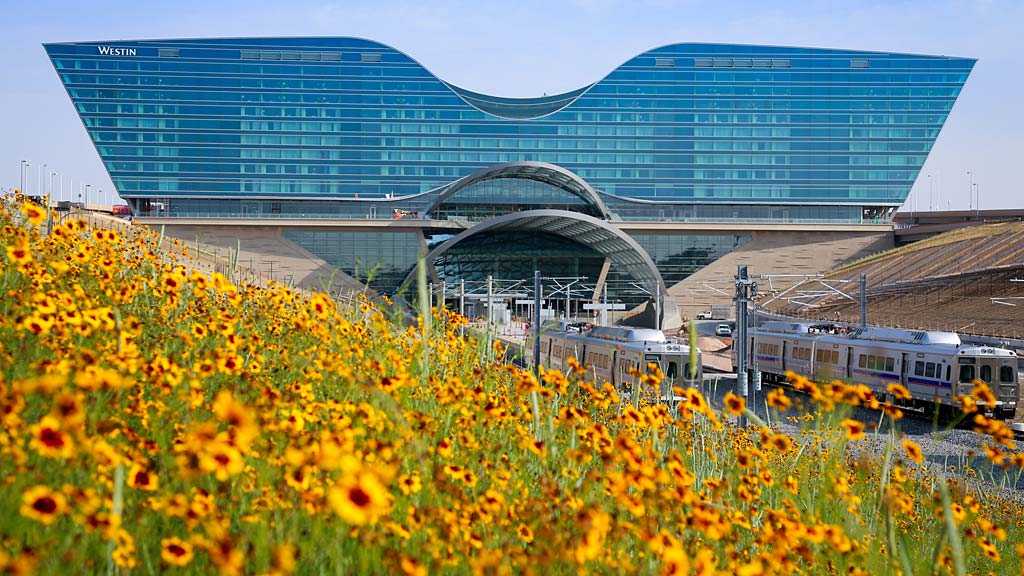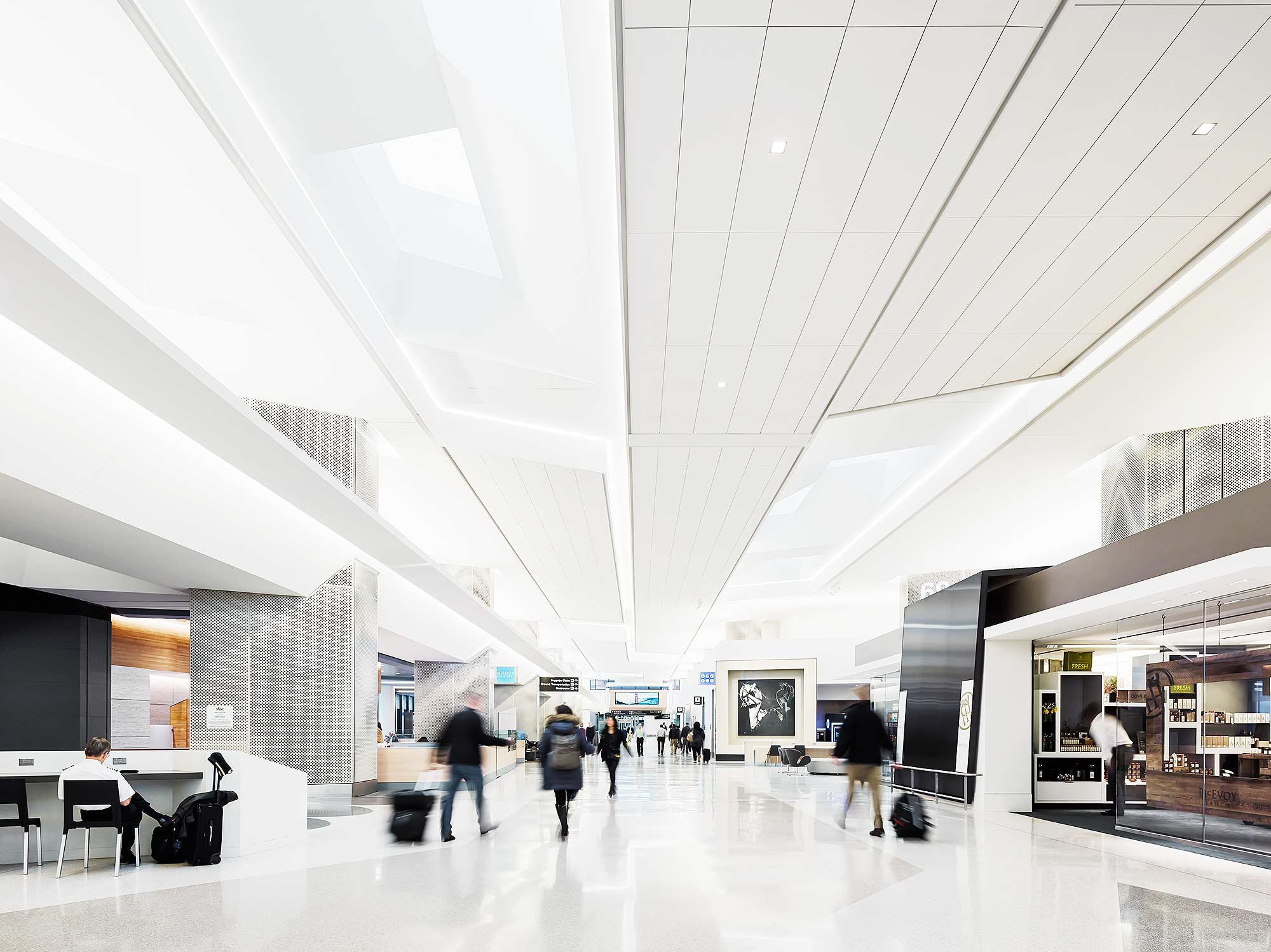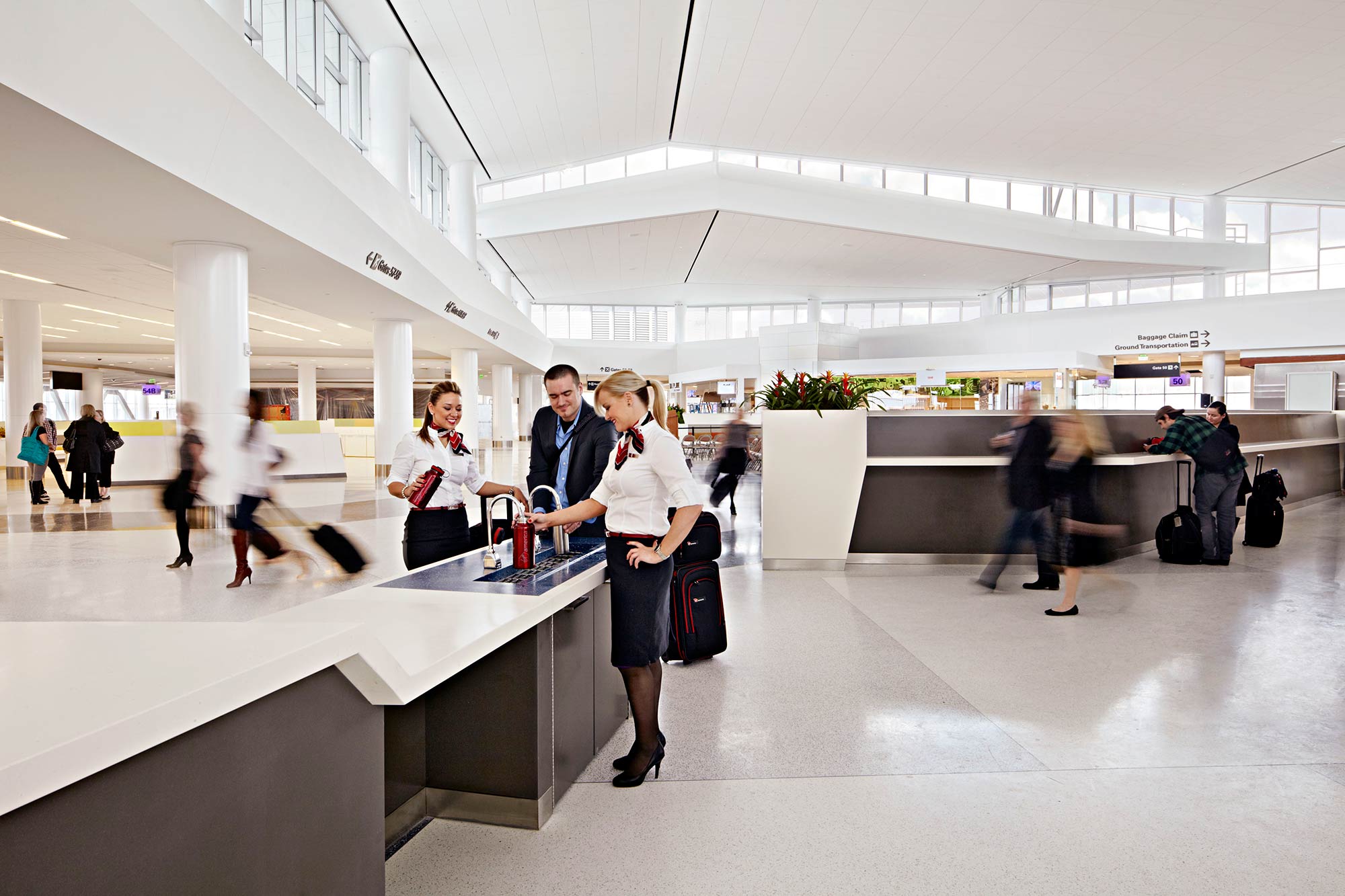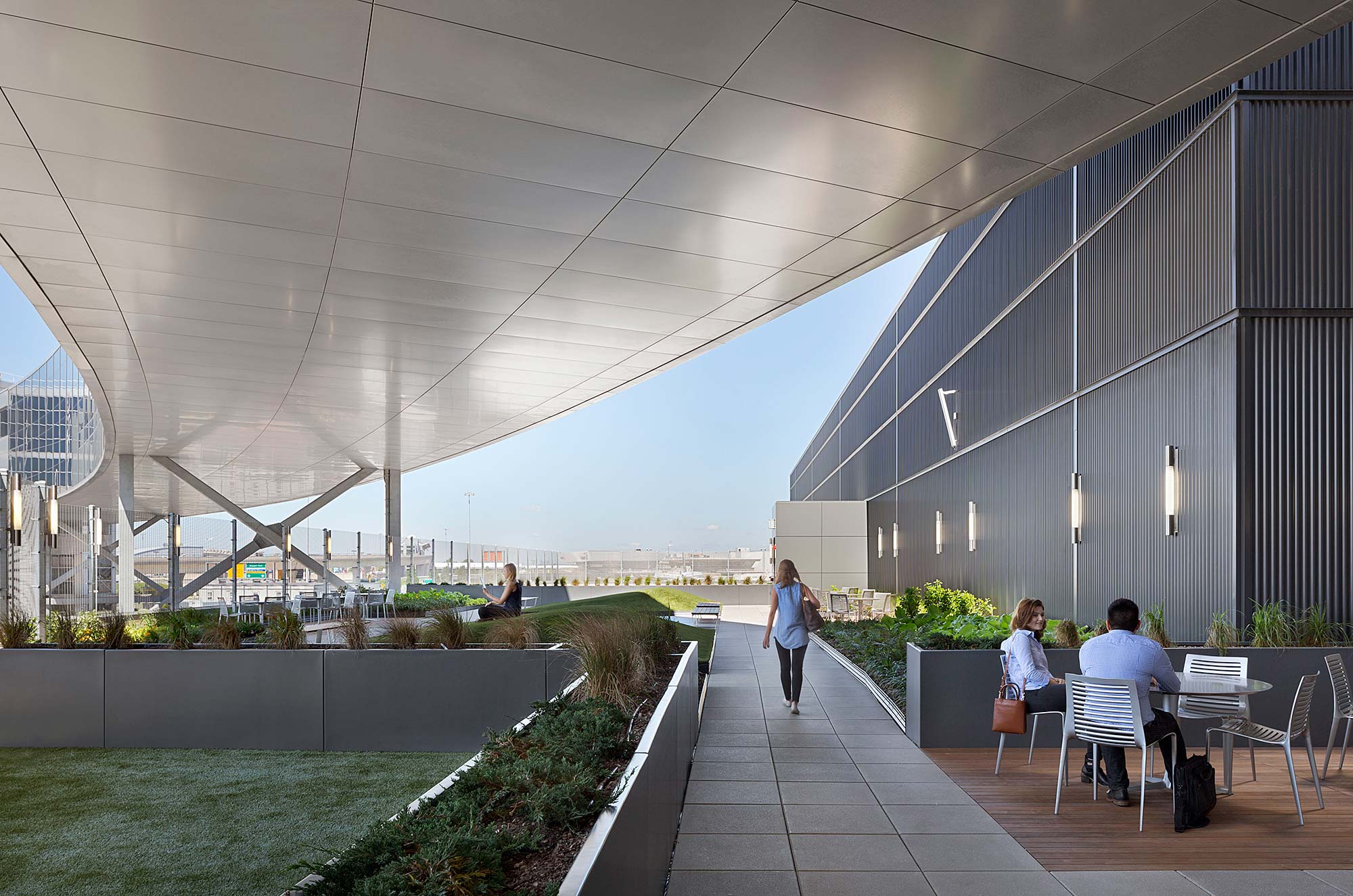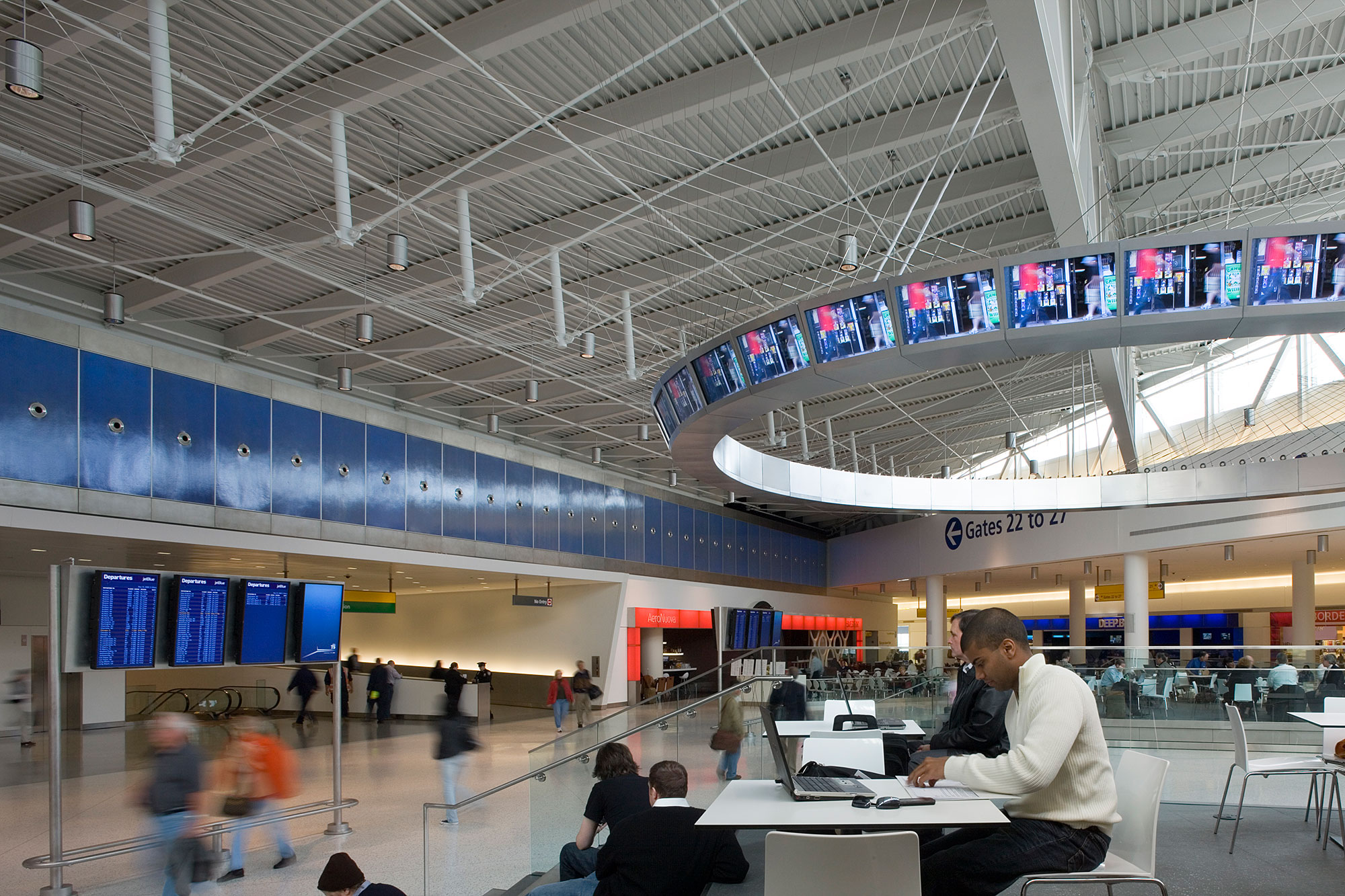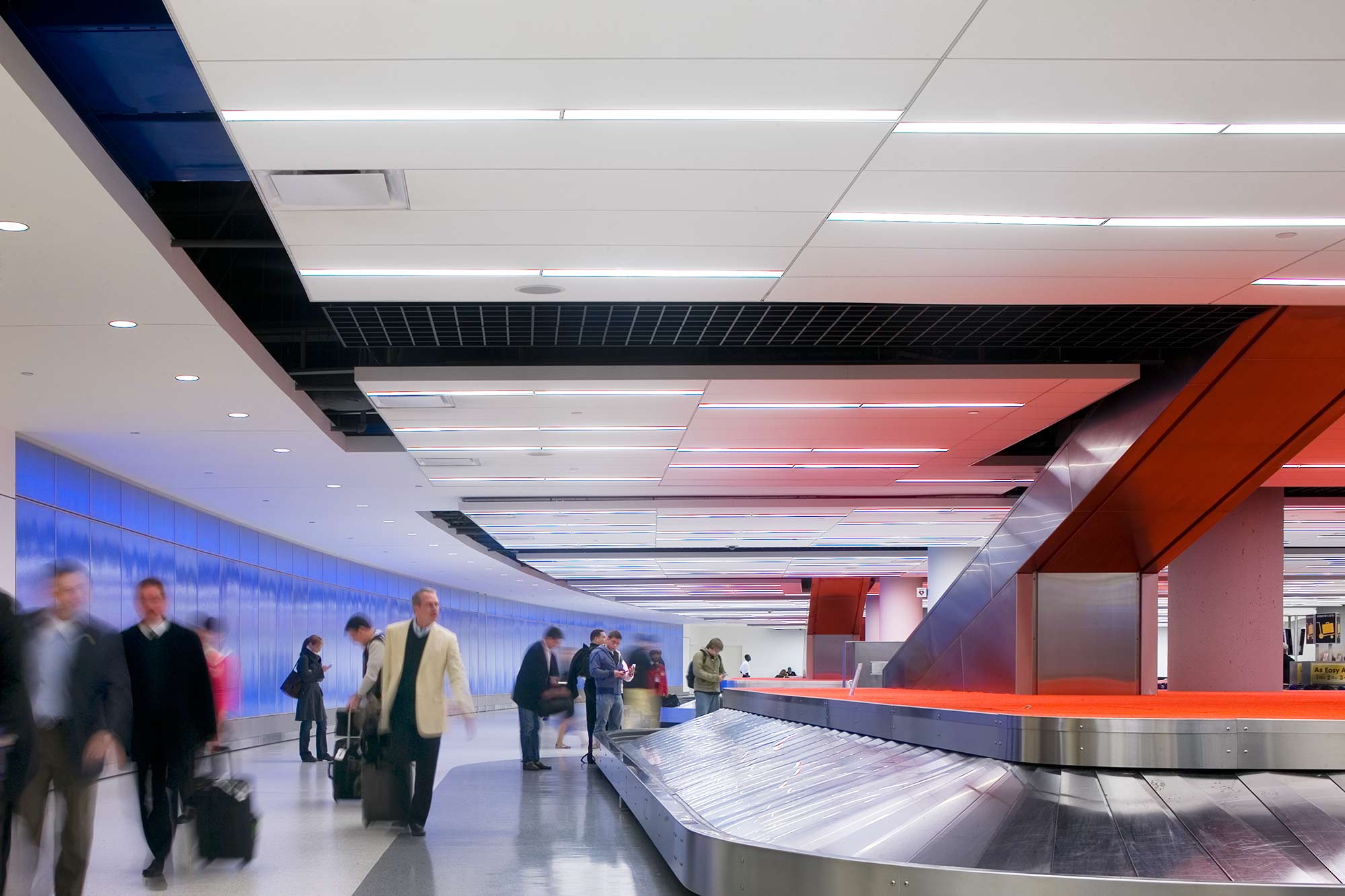What makes a world-class airport?
Across the globe shiny terminals of steel and glass are rising in the world’s growing cities. As they do, these new temples to travel boost both airline and passenger expectations of what airports can be. The knock-on effect is a raising of the stakes for existing terminals. To remain competitive, legacy regional and national airports of choice are asking: What makes for a world-class airport today?
The answer lies beyond retail and dining offerings, sleep pods, or the latest “it-amenity.” The ingredients of a signature airport start with a look at global cities, and the traits that distinguish the world’s top destinations from the rest. To attain world-class standing, airports have to celebrate their inimitable qualities, the characteristics that cater to memorable passenger journeys, from favorable first impressions to experiences that engage from landside to airside. Here, we present Gensler’s round up of the essential elements of a world-class airport.
The world’s most livable cities foster vibrant communities, where arts and culture blend with bustling business, shopping and entertainment to create desirable places to live, work and play. These leading cities inspire and connect inhabitants, while promoting the healthy lifestyles that make them places where people enjoy spending time. The same attributes are found in world-class airports, which are more than mere gateways to their cities, but integral to the experience of them.
The world’s top airports reflect the quality of life their cities offer. A cursory look at the Skytrax World Airport Award winners supports this. Traveler favorite Singapore Changi Airport, for example, houses gardens for which its home city is revered. Changi also balances open space with unparalleled shopping, airline efficiency and unexpected surprises – like a slide for adults – to enjoy while spending time in the island city-state. Korea’s Incheon International Airport offers a global shopping destination in an ultra-modern environment augmented by the latest in travel technology. And at Munich Airport, guests soak up the charms of a central beer garden located in a grand public plaza at the airport’s entrance. Each of these airports embodies the best of their cities; and passengers recognize them for it.
For many passengers getting to and from the terminal can be the most frustrating segment of their travel. This is especially true in the United States, where fewer than 5 percent of airports have connections to passenger rail (and some airports that do – JFK, for example – have difficult and inconvenient rail links). Because the point of air travel is to get from place to place quickly, clunky connections between airports and mass transit are especially problematic. It’s essential for airports to have fast and easy access to public transportation, and the very best connect directly to city rail systems.
Because connectivity applies to more than mass transit, providing seamless mobile communication is imperative. Free wi-fi, powering stations and places to tuck away for a private conversation or quick conference call are amenities people now expect from airports. Moreover, travelers increasingly use smartphones to check in, change flights and navigate airport shopping. And forward-looking airports are finding ways to connect with passengers, physically and virtually, to ease the stress of travel.
Cities are not homogenous, nor are the passengers venturing through them. While the most authentic airports reflect the local cultural context, they’re also welcoming and sensibly familiar for all visitors. Across the globe, airports increasingly share an imperative: to bring order, clarity, calm – even beauty – to the passenger experience. Where travel can be stressful and complicated, leading airports seek to comfort and care for their guests. To do this, airport authorities and airlines need to consider their varied visitor demographics, accounting for differences in age, gender, and physical and cognitive condition to name but a few categories. Additionally, in today’s global context, airports serve a host of world cultures and faiths, and so must cater to passengers with differing, sometimes competing, sensitivities.
Progressive airports have ushered in a golden age for addressing visitor needs. Recent amenities that reflect the traveler-first trend include the yoga rooms at SFO; access to an outdoor rooftop park with spaces for kids, adults and even pets to play at JFK Terminal 5; and now the world’s first airport terminal devoted to animals – The Ark at JFK, currently under construction.
Airports are moving away from thinking of people in logistical terms similar to airplanes and bags: objects that need to be transported from point A to point B. As airports adopt more customer-centric models, their facilities, are evolving to embrace aspects of hospitality. Indeed, airports that see themselves as part of the travel industry reflect this belief with ticket halls that function like hotel lobbies, inclusive of concierge-style ticketing, casual furniture and upgraded amenities. Terminal 2 at SFO is a prime example of this model.
More and more airports are looking to the hospitality industry for ways to put the passenger first, especially when it comes to creating a tailored travel experience. This includes connecting with them through personal devices to communicate flight/gate changes; baggage updates; customer service connections with airline kiosks; and concierge services for airport shopping and dining.
Given growing consumer preference for on-demand delivery and retail self-service, passengers are increasingly seeking a more simplified travel experience. For example, at JFK’s Terminal 5 – home to JetBlue – guests can order food for delivery to their gates. Services like this are part and parcel of a world-class airport and passenger journey.
In addition to interventions with design, planning and amenities, a world-class airport experience is rooted in exemplary customer service. According to CAP Strategic Research, the challenge for airports is finding a customer service model that works for all passengers – tech-savvy or not. One key is finding a way to serve guests all the way through their journey, so they find help when and where it’s most convenient. Airport employees from curbside check-in to security and information desk attendants must all be well versed in customer service, not just information. Airports from Seattle-Tacoma to Kingston Jamaica’s Norman Manley send employees to The Ritz-Carlton’s revered hospitality school to ensure guests in their airports receive a warm, friendly welcome from each employee they encounter.
Increasingly, terminal cleanliness is a big factor in delivering an exceptional passenger experience and a major criterion for passenger satisfaction reports. Poorly maintained terminals are not only unappealing, but can contribute to traveler stress. For the passenger already nervous about flying, a dirty restroom or burnt-out lights can trigger concern about what else might be going wrong behind the scenes.
Finally, world-class airports operate seamlessly, adapting to new technology, new bag-handling procedures, shifting security screening and ever-changing aircraft. It’s impossible to forecast exactly what an airport will need in 10 or 20 years, so the best airport authorities plan for resilient growth and change. While this kind of agility is the foundation upon which great travel experiences are based, these systems are often invisible, and intentionally so. As a dancer makes athletically demanding leaps look effortless, so must an airport shuttle people, their belongings and the planes that serve them without reflecting the effort required to coordinate the complexities of travel. It’s part of the stress-free, seamless and engaging environment that the world’s best airports cultivate.
